Mobile App Development Process: Step-by-Step Guide 2022
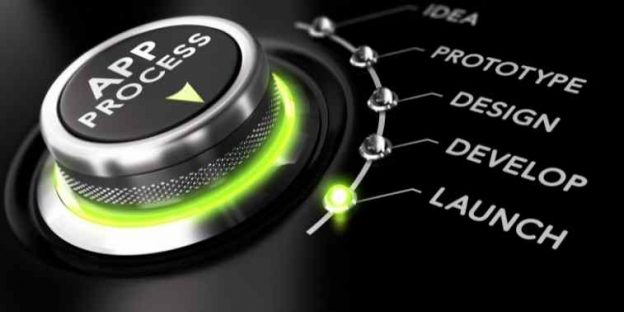
Did you know, via app stores and in-app advertising, it is expected that mobile apps will generate $693 billion in revenue in 2021? (Source) And, it is estimated that by 2022, enterprise mobility would be worth $510.39 billion. (Source). There are many such Stats for Mobile App Growth and Success in 2021 that can help you become an industry leader.
There are many companies that are looking forward to taking advantage of this trend. But many do not know the steps involved in the mobile app development lifecycle. If you follow the step-by-step guide to mobile app development, you will be able to succeed. A successful smartphone app development can help you lead the whole industry you belong to. So let’s answer your question, ‘how to create a mobile app?’.
Source: Mojojojo
In this blog, we will elaborate on all the six key phases involved in a mobile app development process. If you wish to succeed with your mobile app development process this is the ultimate guide. Do you know what are the 10 Steps You Must Take Before Starting Mobile App Development?
1. What Is Mobile App Development?
i. Information Architecture and Workflows:
iv. Device and Platform Testing
3. Mobile App Development Process: Conclusion
4. Mobile App Development Process: Frequently Asked Questions
What Is Mobile App Development?
Mobile app development involves a set of procedures and processes that involves writing code for devices like smartphones. Mobile app development is done to harness the unique features of each device. For example, the mobile app development process can be accelerated to take advantage of data collected from the smartwatch for a health app. Today iOS and Android are the two most used platforms. Mobile phones with both these platforms come with some pre-loaded applications like a web browser.
App Development Process
Without further ado, let’s jump to the iOS and Android app development process. Before that if you are still confused about whether to go for a mobile app development process, we have a brief article for you, How do Mobile Apps Help Enterprises to Grow? Now, let’s move to the stages of app development.
1. Strategy
To develop a successful mobile app, first, you need a clear strategy. In this stage, we should be able to define the objectives of our mobile app. We must elaborate on how our app is going to be different from all others available in the stores. At this stage, you will clearly know about your target audience, your competitors, the goals of your mobile app, and the platform on which you wish to launch your mobile app.
Get to know more about Different Types of Mobile Apps for your business app development and which one is beneficial for you. While you are preparing for the best also, consider some of the strategies that can fail your business mobile app development. Smartphone app development is all about learning both successful and not-so-good strategies.
The cost of a mobile app development ranges between $150,000 – $200,000 on average. Today it has become very easy to own a mobile application. Find out ‘How Long Does It Take To Develop An App?’ with our comprehensive blog.
If you are still thinking about the investment, you must read our blog Mobile App Development is a Sustainable and Cost-Effective Deal; Know How?
2. Analysis And Planning
Source: Giphy
This is yet another crucial part of the mobile app development process. This stage will help you start converting your dreams into a digital reality. You may look out for E-Commerce Business Ideas for Financial Success In 2021 and Ahead.
This stage asks you to prepare a roadmap for your iOS and Android mobile app. You can plan what features can be in your app, how your app will navigate, and what can be the design of your mobile app. This can include a detailed process that you would be following for your app development process.
In this stage, we also need to define the people that would be required for overall mobile application development. You may be needing an app designer, app marketer, and developer. Think about what qualification you would be needing from them. For example, you may need two different teams for iOS mobile app development and Android mobile app development processes.
Also, think about the name of your mobile app. You can create a unique domain and start creating a social presence of yours. You can also take help from our blog, Mobile App Name Generators: How to Choose a Perfect Name of your App?
3. UI / UX Design
Mobile user interface (UI) and user experience (UX) help you create a seamless user experience. There are many benefits of creating a better UI/UX design, in fact, the success of your mobile app would depend on the experience you are able to deliver to your audience. Therefore, whenever you ask ‘how to create a mobile app?’ do put this factor in high priority.
Plan a mobile app design and see if it is interactive, intuitive, and user-friendly. You must definitely avoid some of the UI/UX design mistakes like missing contact information and a difficult checkout process. Therefore, your app designing process must be very clear.
Think about a mobile application design that keeps the users engaged. There are some common features that people expect in iPhone and Android mobile apps, do not forget to include them. Add features that make your mobile application easily adoptable by the users. A successful smartphone app development will have a smooth-running design.
a. Information Architecture and Workflows:
Get to know about the data that will be displayed to your app users and data that your iOS and Android application will collect. Learn a little about the science of structuring and organizing the data of your mobile app. If your mobile app design follows a user-centric approach, you surely will be able to attract a great number of people.
You can also learn about the ‘6 Golden Rules To Create A Mobile App Design That Brings Profit!’ with this blog of ours. A workflow diagram will help you understand the pattern of your iOS and Android mobile application. The navigation pattern and possible user interactions can be deduced with the help of a workflow created as a part of your mobile application development process.
b. Wireframes
Known to be the backbone of the mobile app development process, Wireframing digitalizes the sketches of your mobile app. It is a two-dimensional illustration that describes how a user will be interacting with your iOS and Android application.
Mobile app wireframing includes page elements, object categories, conversion and navigation areas, content prioritization, and possible actions. This app designing process stage does not include defining design elements, colors, fonts, stylized graphics and images, and logos.
While wireframing do consider the device your app would be used on. Provide specifications for iPad, iPhone, and Android applications. This is among one of the most important stages of app development.
c. Style Guide
Graphic elements of your mobile app must follow a set of rules and the set of these rules is called a style guide. This step in the iOS and Android app development process is responsible for explaining all the visual aspects of your mobile app. User interface elements are also included in this application development process.
A good UI Style Guide in the app designing process is organized, adaptable to future scenarios, platform-specific, and easy to use. Fonts, colors, layouts, graphics, components, menus and bars, and dialogues, alerts, and popovers are all defined in this part of the mobile app development process. The design strategy of your mobile app would be included here.
d. Mockups
Mockups, also known as high-fidelity designs, defines the overall atmosphere of the iPhone and Android app. This app designing process includes the visuals of navigation, layouts, typography, color schemes, iconography, and more similar information related to your mobile app. A careful smartphone app development will make use of all these carefully.
A mockup can be created using applications like Adobe Illustrator and Photoshop or you can use some basic mockup generator tools. We have a list of 15 Best App Mockup Tools To Do Mobile App Wireframing.
e. Prototype
Demonstration of functioning of the mobile app, prototype defines the design and navigation of your iOS and Android mobile application. This step in the mobile app development process empowers mobile app developers to recognize the errors in the early stages of mobile app development.
Skipping this app designing process step will cost more money for iOS and Android app development in the long run. There can be low-fidelity prototypes and high-fidelity prototypes. A low-fidelity prototype is inexpensive, disposable, low-effort, and supports design thinking. Whereas a high-fidelity prototype is engaging and has valid user research results.
4. App Development
Now comes the most awaited section of the app development process. The best way to go about all these mobile app development processes is by hiring a mobile app development company. An app development company can help you with all the steps involved in the iOS and Android app development process seamlessly. This requires the development of the back-end, APIs, and front-end.
a. Back-End/Server Technology
Your mobile app stores and secures the data with the help of backend technology. All the user-related information required by the iOS and Android mobile app is stored in the backend. This stage of the app development process collects data from the front end using protocols over the internet.
Mobile apps like a basic calculator, voice recorder, compass, notes, and similar do not require a backend. Some of the basic features of the backend for an iOS app include a real-time database, automatic synchronization, push notifications, email notifications, social login, API console, and analytics.
Do check out our guide, How to Choose the Right Mobile App Database for Your Android and iOS Applications?
b. API
API or Application Programming Interface defines communication between the backend and frontend of the iOS and Android mobile applications. It is an important step in the mobile app development process that also adds a layer of security for your iOS and Android applications. This part of smartphone app development will help you connect your users with the true features of your mobile app.
You can also view our Complete Guide for API Development.
c. Mobile App Front-End
Whatever you see on your mobile screen in an iOS and Android app qualifies as a front-end. There are two ways of developing a mobile app. First to code two different codes, one for iOS app development and the second for Android app development. Or second, one codebase for both the apps, iOS, and Android app development.
Both these processes have their pros and cons. And both of them suit a different style of business that you can check here, Native Apps Vs Hybrid Apps: Which One To Consider For Your Next Project?
For simple mobile apps, one iOS and Android app developer can create both the backend and the frontend. A complex application that requires communicating with a server, you may need different mobile app developers for the frontend and the backend.
HTML, CSS, and JavaScript are some of the languages that can be used to build the front-end of the mobile app. This mobile app development process must ensure that the users receive a smooth and functional product that is appealing to their eyes.
5. Testing
This is yet another one of the most important parts of the app development process. Quality assurance (QA) testing can be manual or automated. The consistency, functionality, and usability of a mobile app are tested in this part of the mobile app development process. This is yet another one of the crucial stages of app development.
In the initial phases of mobile app development, mobile app developers use manual testing for testing specific features. Once the iOS and Android mobile applications are complete, iOS and Android mobile app developers/testers automate test scenarios based on the experience a user is going to have. Here are the Top 10 Automation Testing Tools in 2021 You Can Use.
a. User Experience Testing
It is testing different aspects of the user experience of a mobile application and its elements. Conducting the user experience testing on the product of your competitor even before the app development starts is always recommended.
This helps us in determining the test cases for our iOS and Android application and will allow us to learn more about mobile app features we must include.
>b. Functional Testing
Functional testing on your mobile app ensures that the app does what it is meant to do. The black-box testing techniques are required for the functional testing of your iOS and Android app. Here, the QAs do not know the internal system logic, they just check the app for its functionalities.
It is always recommended to automate the functional tests. It reduces the time involved in the testing process and human error can also be reduced. The QA team needs to create test cases to smoothly run the testing process on your mobile application.
You can learn more about functional testing with our blog, 8 Functional Testing Types (Explained With Examples).
>c. Performance Testing
In Performance Testing, your iOS and Android mobile app are tested for stability and responsiveness when working under a certain workload. Speed, application size, reliability, and robustness are tested in this step of the mobile app development process.
Performance testing is necessary for your mobile app as it analyses the capacity of the application, checks its performance under critical conditions, and assesses the performance.
Load testing, stress testing, capacity testing, and spike testing are some of the tests that can be performed on a mobile application.
>d. Device and Platform Testing
New hardware, firmware, and design take an entry into the market in an average of 12 months. And every few months the operating system of the mobile is updated.
Also, since Android is open-source different manufacturers (ex, Samsung, LG) customize the operating system as per their needs. Today we can see mobile devices coming in various shapes and screen sizes.
On the other hand, Apple delivers a controlled environment. But Apple devices come in various sizes too, iPhones and iPads.
Because of all these the testing of mobile apps becomes different from web testing. This part of the mobile app development process involves testing the mobile application of different devices. This will ensure that your mobile app works smoothly on each mobile phone and for each user.
>e. Security Testing
Today security has become a big concern for people around the world. Even a small security issue can lead to the leaking of data. Your QA team, and iOS and Android mobile app developers can assure the security of your mobile app. This is the most crucial step of your smartphone app development.
For essential mobile apps, the mobile app must log the user out after their inactivity. This usually happens when the user has not used the mobile app functionalities for about 10 minutes.
If your iOS and Android app stores the data for re-login of the user, then your mobile app developers must choose a secure platform to do so.
6. Deployment and Support
This is the final step of the mobile app development process. In this step, your iOS and Android mobile apps are submitted to their respective app stores. To launch your mobile app you need a developer account on both Google Play Store and Apple App Store.
If you have a mobile app development company working on your app development process, they can help you with this stage. To successfully launch your app and complete the iOS and Android app development process, we need your app’s title, description, category, keywords, launch icon, and app store screenshots.
For iOS mobile apps, you would require to go through a review process as a part of stages of app development. This process may take some days to complete. You must follow all the guidelines provided by the App Store for your iOS app. If your iOS app has a login system, you would be asked to submit a test user account for your mobile app to be released successfully.
For Android mobile apps, there is no such review process and your app will be available within some hours of submission.
Most of the iOS and Android app development companies provide support even after your app development process is complete. You can ask your users for feedback and keep your iOS and Android app updating with features people are looking forward to. This forms the complete answer to your question, ‘how to create a mobile app?’.
Some Bonus Steps Related To Mobile App Development
1. Project requirement discussion
Project requirement discussion is one of the app development basics that you must not miss on. Clearly defining your requirements for your enterprise mobile application development will help you get the right product you expect from the mobile app development company.
You can also ask your mobile app developers to rewrite the requirements you have shared with them. This would clarify any confusion that arises between you and your mobile app developers at the initial stages of the app development process.
You can go through our list of 10 Tips to Hire Android App Development Companies and Tips to Hire an iOS App Developer.
2. Business Insight and Estimation
This is one of the stages of app development that you must not miss. The mobile app development company you hire for your project will be asking you for the details about your company. This allows the iOS and Android app developers to align your company with the cell phone app development.
Estimation is one of the stages of app development where the clients usually get confused. Here, we must not go with the lowest deal we are receiving rather understand it properly. There are many app development companies that have hidden charges which you will have to pay later. Look out for a deal that is clear, that promises you a decent app, and that has some professional mobile app developers.
To help you more with the estimation, we have a blog, How Much Does It Cost to Make an App: Total Cost Estimate Breakdown.
3. Signing NDA
Enterprise mobile application development is very crucial and it is important to keep your mobile app idea safe. Once you agree with the estimated cost of the company, you must sign an NDA. An NDA or a Non-Disclosure Agreement assures that your idea is safe from potential threats.
NDA is an agreement between iOS and Android mobile app development companies and the person who has the app idea. If the mobile app development company is creating an NDA for you, do get it reviewed by your lawyer.
Mobile App Development Process: Conclusion
Source: Dribbble
This is the complete app development process. Following this mobile app development process will help you get the right iOS and Android app. The smartphone app you are delivering can reach greater heights and you can be an industry leader if you follow these steps correctly. Which point in the mobile app development process do you think is missing?
Get Help From a Professional Mobile App Development Company
VerveLogic is a mobile app development company that can help you with the app development process. We have a team of iOS and Android app developers that are equipped with the latest tools and technologies to deliver robust and functional products. We aim at achieving one-hundred percent client satisfaction by delivering industry-ready mobile apps and 24/7 customer support.
After you complete your mobile app development process, you must start marketing it. Even during the app development phase. Here is A Step-By-Step Guide to Marketing Your Mobile App.
Frequently Asked Questions
Q. Why should you start the mobile app development process?
The process of creating an app will help you get a digital presence for your app development company. With an iOS and Android app, you will be able to reach out to a larger audience and create a loyal user base. This is one of the best ways to know more about the products you have and make your approach better. To know more about the reasons for starting a mobile app, you can read our blog, Why Custom App Development Proves to Be a Perfect Choice?
Q. Is enterprise mobile application development difficult?
Taking help from a professional mobile app development company is always appreciated as they have industry knowledge. Mobile app programming can be a little difficult for some people. In these advanced times, you would be needing a highly secure enterprise mobile application.
Q. How do Mobile Apps Help Enterprises to Grow?
From increased client visibility to better customer engagement and rising above the competition, there are many benefits of going through enterprise mobile application development. You can read about these points and more in detail with the help of our comprehensive blog, How do Mobile Apps Help Enterprises to Grow?
Q. What is the process of creating an app?
There are 6 major steps involved in the mobile app development process. These steps include:
1. Strategy: This step of cell phone app development will help you create the basic strategy of your mobile app and help you understand why your mobile app will exist.
2. Analysis And Planning: This is one of the app development process steps where you get to plan the overall features of the iOS and Android mobile app and analyze your competitors.
3. UI / UX Design: The app designing process will help you deliver a seamless experience to your users.
4. App Development: This step of the enterprise mobile application development process will finally realize the iOS and Android mobile app.
5. Testing: Mobile app programming and other elements are tested in this stage of app development.
6. Deployment and Support: Now, your mobile app finally gets to the Apple App Store And Android Play Store.
Q. How to Get the App Store to Approve Your App?
App Store has a strict policy for mobile apps. These are app development basics that every mobile app development company knows. Your enterprise mobile application development will be approved when you follow these guidelines issued by Apple. You can get App Store guidelines from the official apple website. And you can also read our blog, 6 Tips to Get the App Store to Approve Your App for further information.






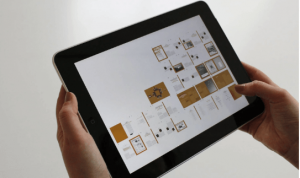




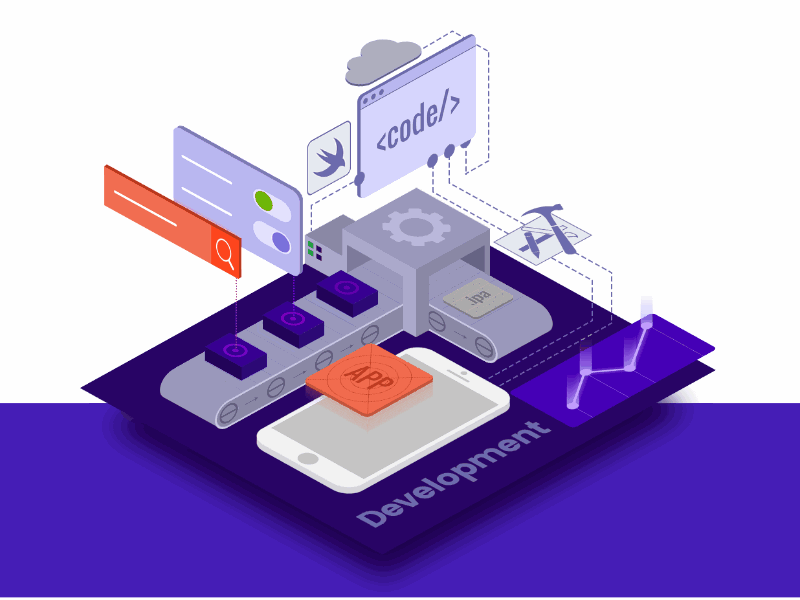
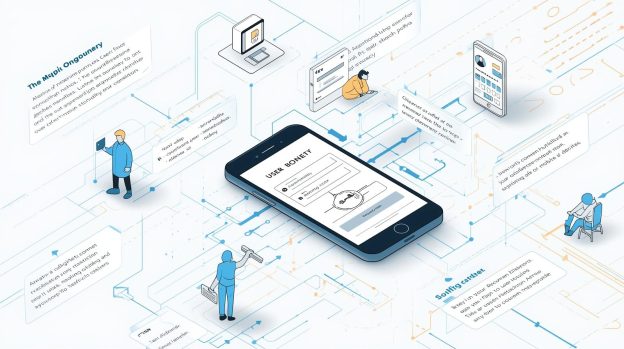
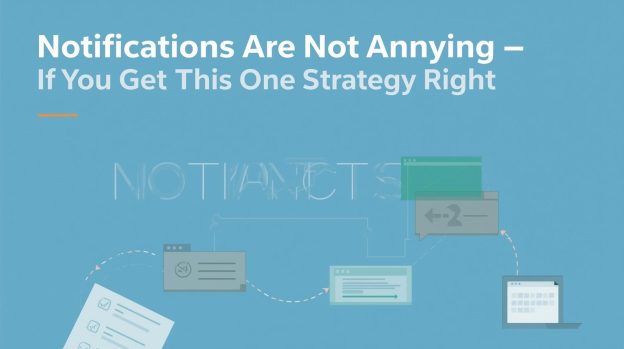
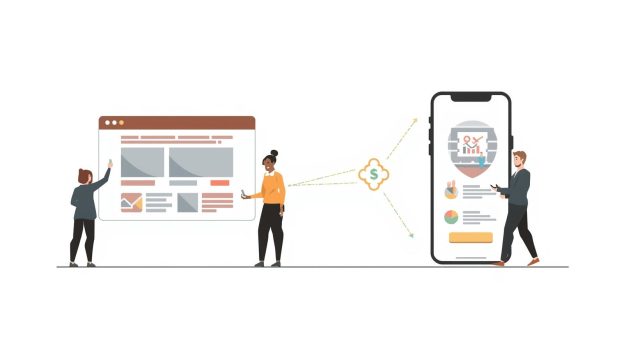


This blog definitely helps. The comprehensive writing is definitely helping a lot of people understand the app development process.
I was planning for mobile app development and was searching for this type of blog. What an amazingly written blog it is.
Sharing this link with all my friends looking for mobile app development.
You guys made it very easy to learn about the mobile app development process. Bookmarking this for future.
Thanks for sharing the post, it was really a great experience reading this article, it provided true knowledge
to me learned new things.
Understanding the mobile app development step by step process is quite crucial, especially when your business relies on it. Thanks for this detailed information.
Understanding and gaining knowledge of the app process step by step. Thankyou for sharing this useful information
The topic has everything covered related to the mobile app dev. Informative and complete.
This gives information about the process of app development. Thank you for sharing this article, it is true knowledge to gain.
This blog contains every information I needed.
This is the ultimate guide to mobile app development. Really helpful.
having the hack of the mobile app dev process helps well with budgeting. Being related to the field for over 5 years now I would suggest the business owners have a map of mobile app development.